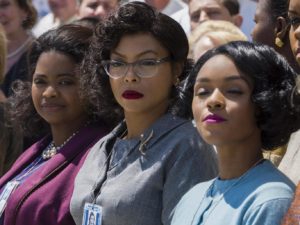 “Meet the Women You Don’t Know.” With those words, most of us were introduced to the Black women who worked on NASA’s mission to send an American into orbit in space. Thanks to Margot Lee Shetterly‘s research and writing, this year we learned the story of Katherine G. Johnson, Dorothy Vaughan and Mary Jackson.
“Meet the Women You Don’t Know.” With those words, most of us were introduced to the Black women who worked on NASA’s mission to send an American into orbit in space. Thanks to Margot Lee Shetterly‘s research and writing, this year we learned the story of Katherine G. Johnson, Dorothy Vaughan and Mary Jackson.
Not just the three women profiled in the movie Hidden Figures, but dozens of Black women who defied sexism, racism and segregation to work at NASA in Hampton, Virginia. “Human computers” with extraordinary mental capacities. Who Knew?
“We are the ones we have been waiting for”
The story of Black women standing up for freedom in America is filled with “hidden figures.” As I write the story of so many courageous women, I am reminded of June Jordan‘s iconic poem “We are the ones we have been waiting for.”
Susie King Taylor (1848-1912)
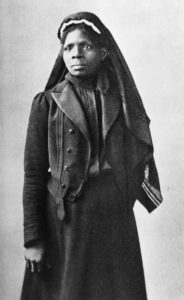 Susie King Taylor (1848-1912) was born a slave in Liberty County, Georgia. She learned how to read at secret schools taught by Black women. She escaped from slavery in 1862. Within days, Taylor began a lifetime of teaching other Blacks to read and write.
Susie King Taylor (1848-1912) was born a slave in Liberty County, Georgia. She learned how to read at secret schools taught by Black women. She escaped from slavery in 1862. Within days, Taylor began a lifetime of teaching other Blacks to read and write.
Between 1862 and 1866, Taylor served as a nurse with the 33rd United States Colored Infantry Regiment. She traveled the South with the regiment, teaching many Black soldiers to read and write. As a Black woman in the South during the Civil War, she was always in an incredibly dangerous position. Taylor was one of thousands of brave Black women who served in the Colored Infantry. She wrote a book about her experiences entitled “Reminiscences of My Life In Camp.”
After the Civil War, Taylor established independent schools throughout the South for former slaves and soldiers. In 1874, she relocated to Boston where she dedicated her later life to the Women’s Relief Corps, a national organization for female Civil War veterans. Taylor was a tireless advocate for all of the veterans of the Civil War.
Patricia Stephens Due (1939-2012)
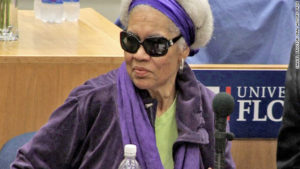 Patricia Stephens Due (1939-2012) began fighting segregation at age 13 when she insisted on being served at the “white only” window of the local Dairy Queen, instead of the “colored” window in Quincy, Florida. She became a lifelong civil rights activist.
Patricia Stephens Due (1939-2012) began fighting segregation at age 13 when she insisted on being served at the “white only” window of the local Dairy Queen, instead of the “colored” window in Quincy, Florida. She became a lifelong civil rights activist.
Due was a college student at Florida A&M University (FAMU) when she joined the Congress of Racial Equality (CORE) in 1959. She served in leadership roles in CORE and the NAACP fighting against segregation. She was also a union activist who helped organize healthcare workers.
In 1960, Due, her sister Priscilla Stephens and six other FAMU students spent 49 days in the nation’s first “jail-in.” They refused to pay a fine for sitting in a Woolworth’s “Whites Only” lunch counter in Tallahassee, Florida. The tear gas used against the protestors damaged Due’s eyes and she wore dark glasses for the rest of her life.
 Due led one of the most dangerous voter registration efforts in the country in northern Florida in the 1960s. After the “jail-in,” she and other students who participated traveled the country in speaking tours to publicize the civil rights movement. In 1963, she married civil rights attorney John D. Due, Jr. They worked together for many decades to challenge injustices in Florida. Her FBI file was reportedly more than 400 pages. It was Patricia Due’s belief that “ordinary people can do extraordinary things.”
Due led one of the most dangerous voter registration efforts in the country in northern Florida in the 1960s. After the “jail-in,” she and other students who participated traveled the country in speaking tours to publicize the civil rights movement. In 1963, she married civil rights attorney John D. Due, Jr. They worked together for many decades to challenge injustices in Florida. Her FBI file was reportedly more than 400 pages. It was Patricia Due’s belief that “ordinary people can do extraordinary things.”
Thelma McWilliams Glass (1916-2012)
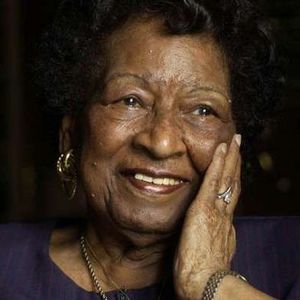 Thelma McWilliams Glass (1916-2012) was one of the early organizers of the Montgomery Bus Boycott in 1955. Glass, a graduate of Alabama State University and Columbia University, was the Secretary of the Women’s Political Council. Black women formed the Women’s Political Council at Alabama State College in Montgomery in 1946. It included teachers, social workers, nurses and the wives of Black professionals in Montgomery. Its focus was to end the humiliation inflicted on Blacks who rode public buses.
Thelma McWilliams Glass (1916-2012) was one of the early organizers of the Montgomery Bus Boycott in 1955. Glass, a graduate of Alabama State University and Columbia University, was the Secretary of the Women’s Political Council. Black women formed the Women’s Political Council at Alabama State College in Montgomery in 1946. It included teachers, social workers, nurses and the wives of Black professionals in Montgomery. Its focus was to end the humiliation inflicted on Blacks who rode public buses.
Following the victory in Brown v. Board of Education in 1954, the Women’s Political Council called for a boycott of the Montgomery bus system. Thelma Glass passed out fliers, spread the word in the community, drove and organized car-pools for people to get to work. That boycott became the modern “shot heard around the world.” Thousands participated and it inspired millions. Several Black women, inspired by the Women’s Political Council, refused to give up their seats to whites on buses in 1955 and got arrested. The NAACP chose to highlight the arrest of Rosa Parks, an NAACP secretary and activist for many years. The Montgomery bus boycott triggered the end of segregation in public accommodations and launched the public career of Rev. Dr. Martin Luther King.
In 2005, Thelma Glass remarked that “we didn’t have time to sit still and be scared.”
As I celebrate Women’s History Month 2017, inspired by these courageous sisters, I want us all to know that this is our history and “we are the ones we have been waiting for!”

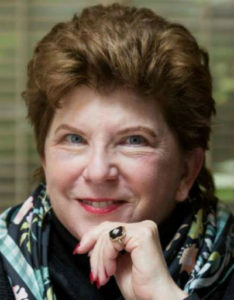 As we enter Women’s History Month 2017, we are in the midst of seeing history made. Delaine Eastin is running for California Governor. She is only the fourth woman in the history of California to run for Governor. Delaine is the only woman in the 2018 Governor’s race.
As we enter Women’s History Month 2017, we are in the midst of seeing history made. Delaine Eastin is running for California Governor. She is only the fourth woman in the history of California to run for Governor. Delaine is the only woman in the 2018 Governor’s race.